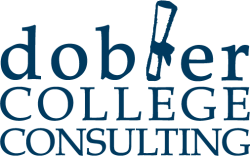Applying For Financial Aid
 If your son or daughter is going to college, then you already know that you should apply for financial aid if you want to be considered for need-based aid, grants and loans. What you may not know is that there are two different financial aid applications.
If your son or daughter is going to college, then you already know that you should apply for financial aid if you want to be considered for need-based aid, grants and loans. What you may not know is that there are two different financial aid applications.
First, let’s talk about the application everyone needs to fill out.
The FAFSA is the Free Application for Federal Student Aid. It’s the application that is required by every college in order to consider and then award financial aid to your son or daughter. The FAFSA is free and while it will take some time to fill out, if you organize yourself ahead of time it will be much easier.
The FAFSA is a smart form which you will find very helpful. Based on the information you enter, the FAFSA customizes the questions so that you only need to answer questions that pertain to your individual situation.
While everyone needs to fill out the FAFSA, based on colleges you are applying to, some of you may need to also fill out the CSS Profile.
The Profile is only required by a couple hundred private schools in addition to some scholarship programs. Unlike the FAFSA, the Profile is not free. It will cost you $16 to register and then an additional $9 per school for each school to which you send the form. The Profile also takes longer to complete and digs deeper into your financial picture.
To help yourself out with both the FAFSA and the CSS Profile, some of the information you will want to gather before you get started include:
- Student and parents’ social security numbers
- Student and parents’ driver’s license numbers
- Statements for checking and savings accounts
- Copies of last year’s tax return and W-2’s
- Statements for any 529 accounts
- Statements for any investment accounts
- Current mortgage statement (Profile only)
Keep in mind that while current seniors are just filling out the FAFSA now (it went live on January 1st while the CSS Profile became available on October 1st) next year’s seniors will be able to fill out both the FAFSA and the CSS Profile starting in October.
This is a welcome change to the FAFSA as it will allow you to file financial aid applications using real numbers rather than estimates. Currently, you apply for financial aid using estimations for income and assets based on prior year information. With this new timeline, you will now use prior-prior year information – there will be no more guessing.
For those of you are very much depending on financial aid to help make a decision on where your son or daughter will be able to go to college, having this information in the fall of their senior year rather than waiting until the late spring, when they only have so many weeks left before the May 1st deadline is going to be very helpful.
There’s a lot to like about that.
If you would like some assistance with your college search or financial aid process, contact me today for a free 60-minute consultation.
Here’s what other families like yours are saying about how Dobler College Consulting made a difference for them.




